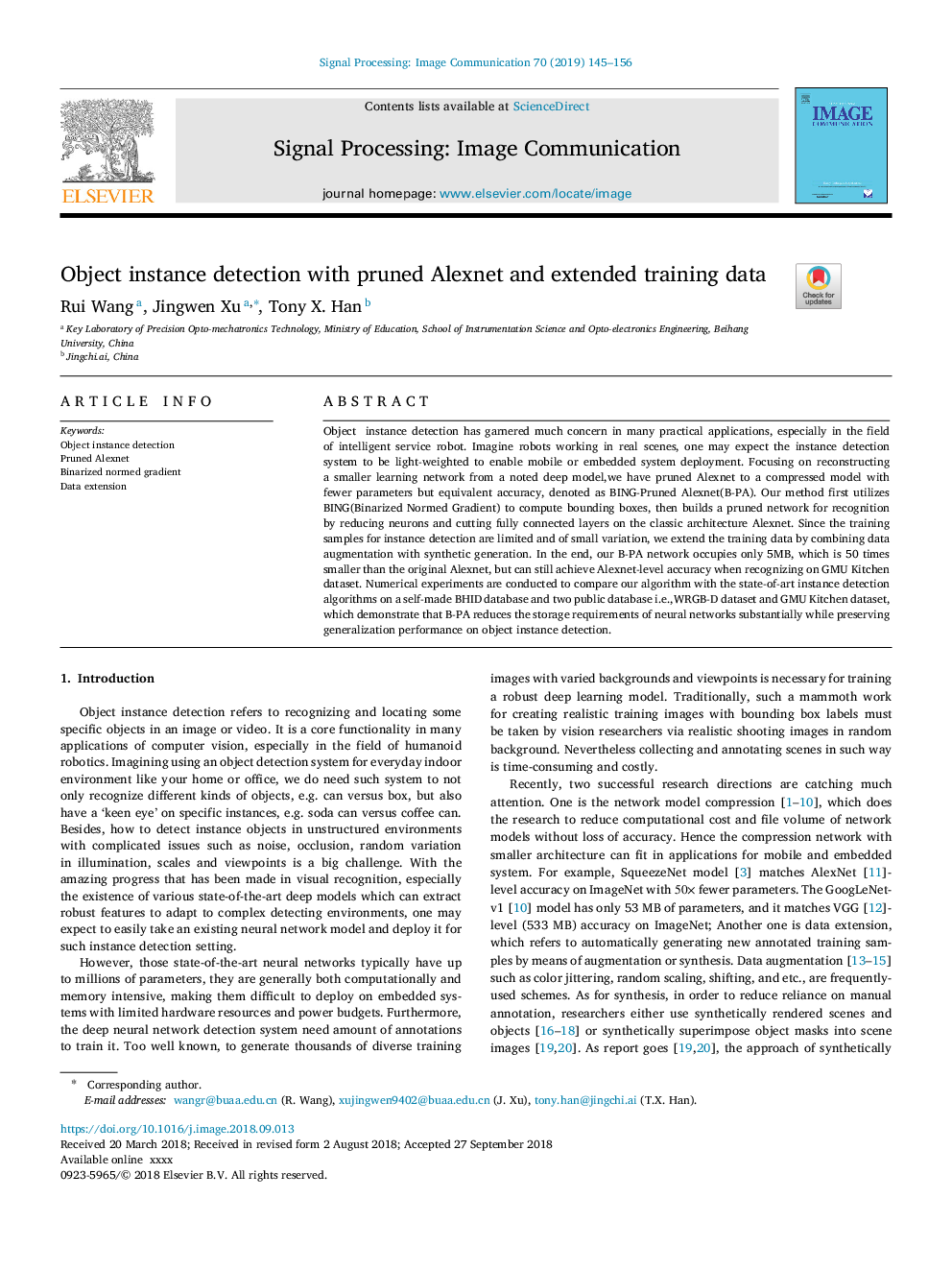| Article ID | Journal | Published Year | Pages | File Type |
|---|---|---|---|---|
| 11028049 | Signal Processing: Image Communication | 2019 | 12 Pages |
Abstract
Object instance detection has garnered much concern in many practical applications, especially in the field of intelligent service robot. Imagine robots working in real scenes, one may expect the instance detection system to be light-weighted to enable mobile or embedded system deployment. Focusing on reconstructing a smaller learning network from a noted deep model,we have pruned Alexnet to a compressed model with fewer parameters but equivalent accuracy, denoted as BING-Pruned Alexnet(B-PA). Our method first utilizes BING(Binarized Normed Gradient) to compute bounding boxes, then builds a pruned network for recognition by reducing neurons and cutting fully connected layers on the classic architecture Alexnet. Since the training samples for instance detection are limited and of small variation, we extend the training data by combining data augmentation with synthetic generation. In the end, our B-PA network occupies only 5MB, which is 50 times smaller than the original Alexnet, but can still achieve Alexnet-level accuracy when recognizing on GMU Kitchen dataset. Numerical experiments are conducted to compare our algorithm with the state-of-art instance detection algorithms on a self-made BHID database and two public database i.e.,WRGB-D dataset and GMU Kitchen dataset, which demonstrate that B-PA reduces the storage requirements of neural networks substantially while preserving generalization performance on object instance detection.
Keywords
Related Topics
Physical Sciences and Engineering
Computer Science
Computer Vision and Pattern Recognition
Authors
Rui Wang, Jingwen Xu, Tony X. Han,
